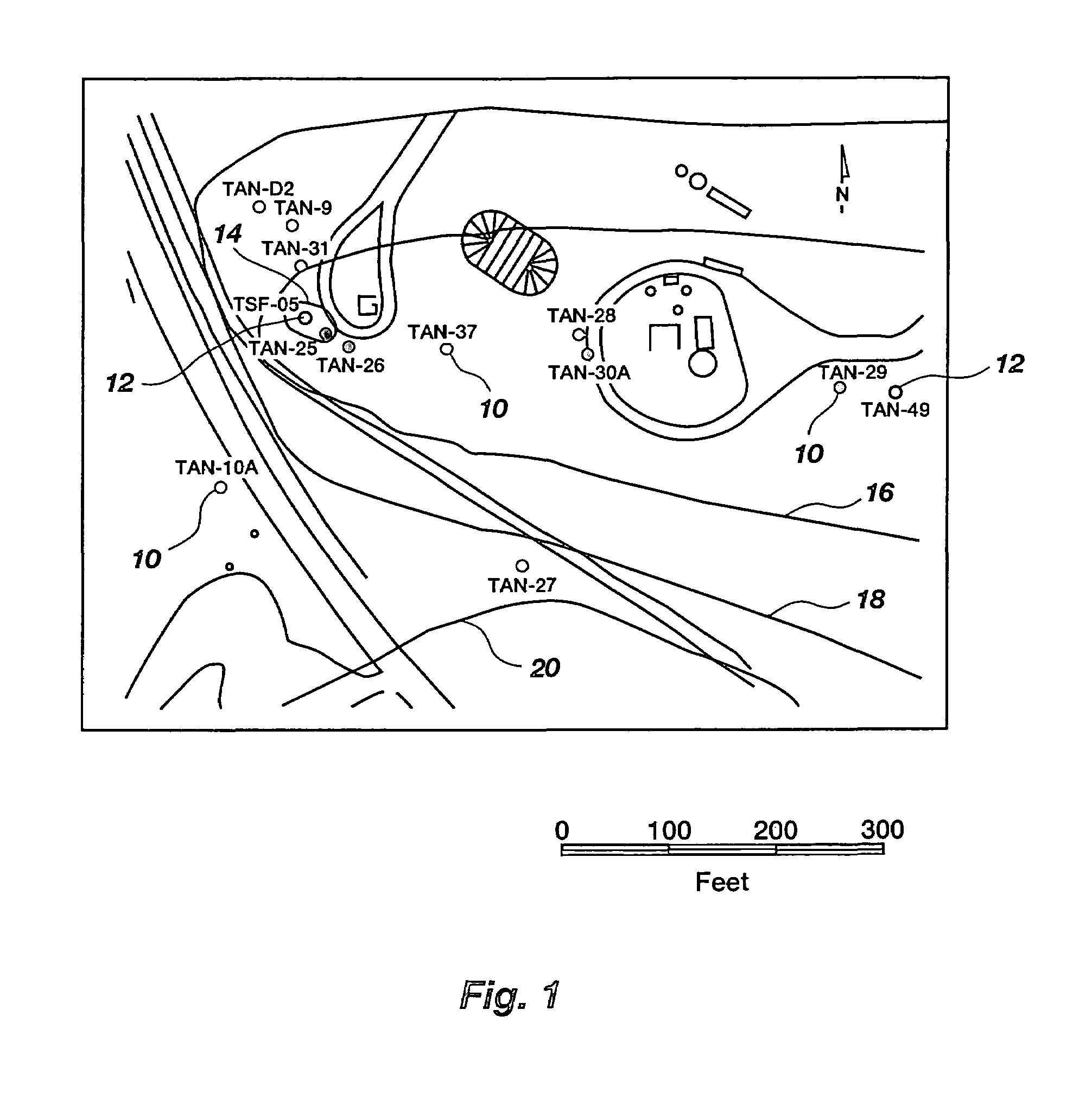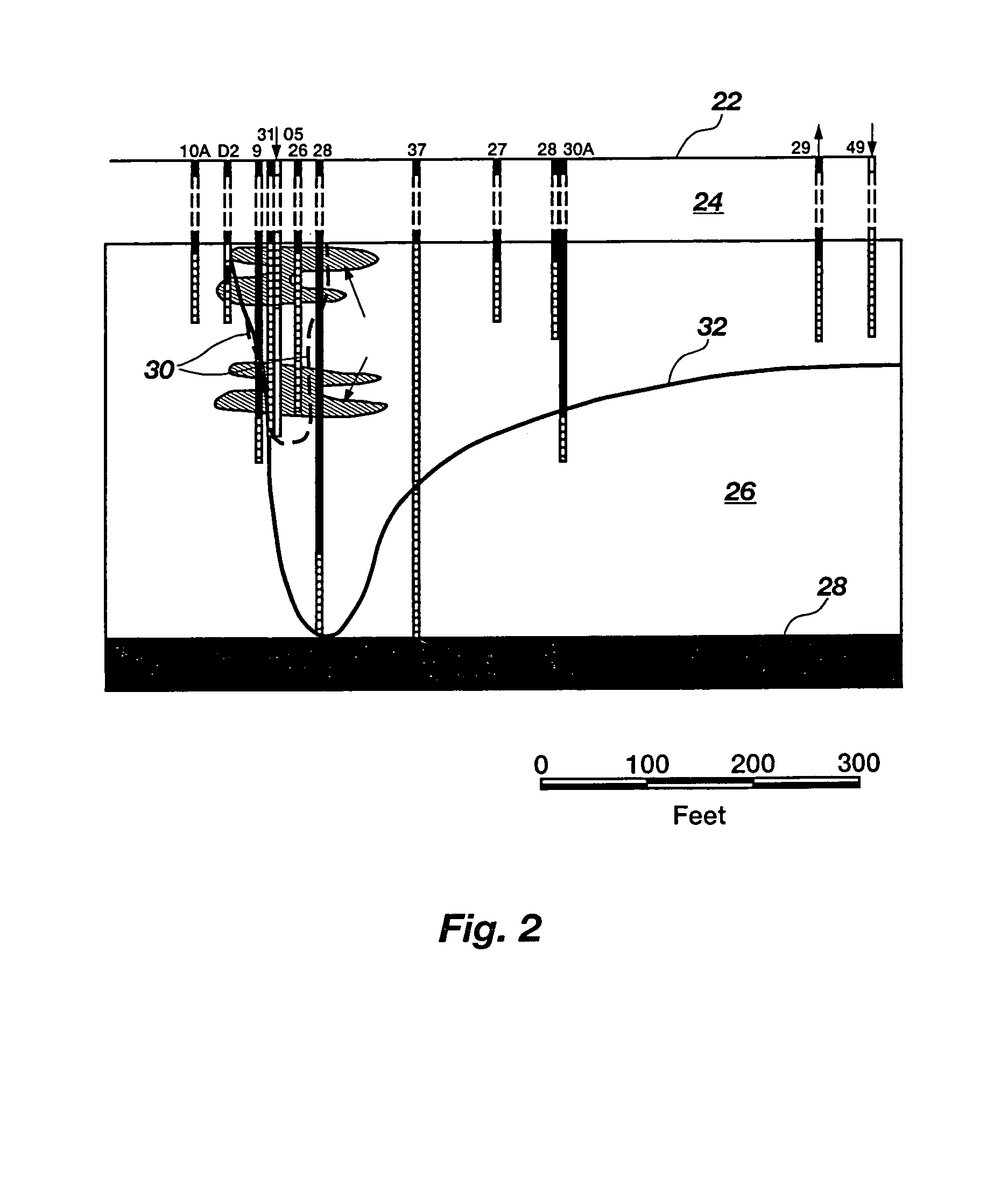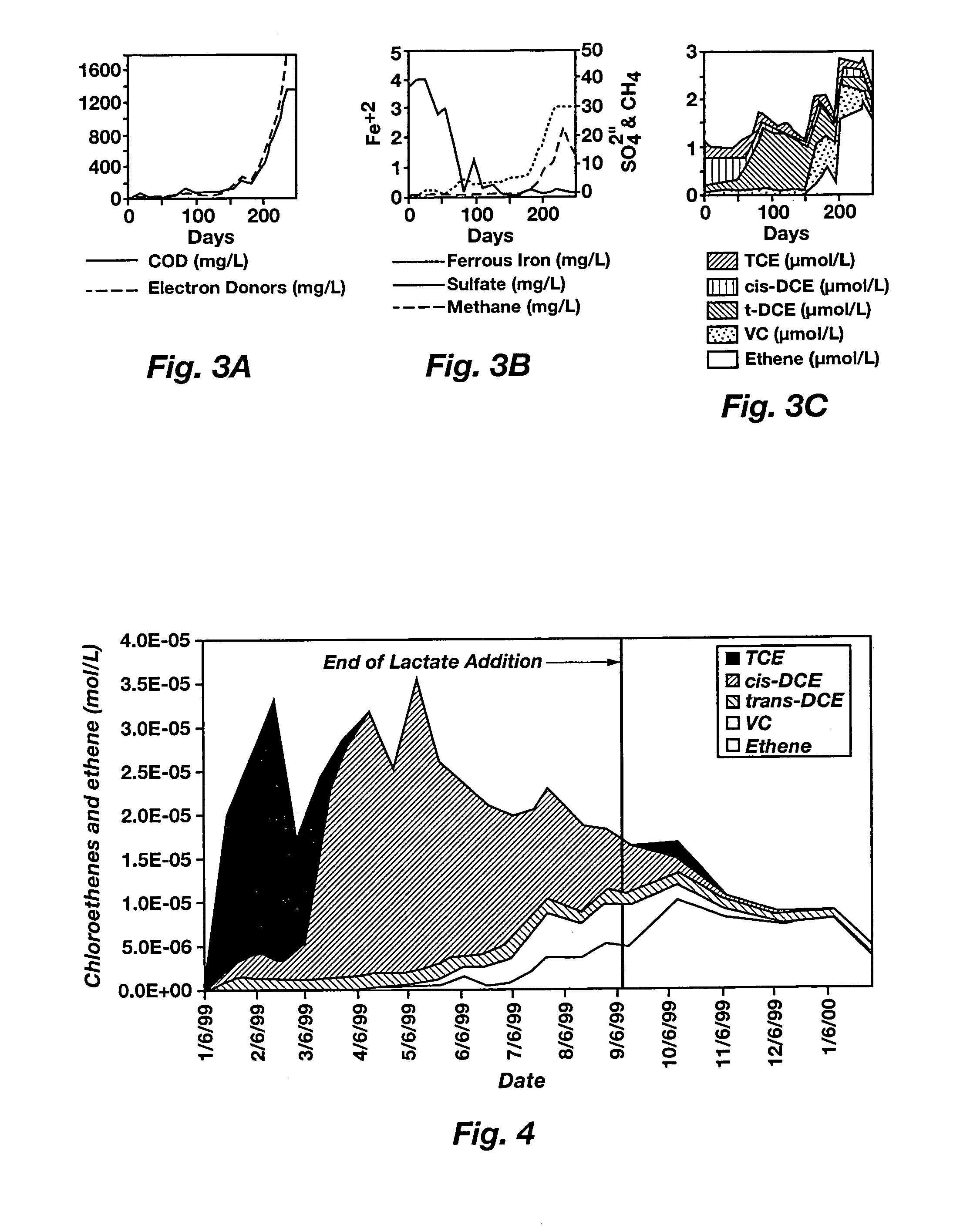Electron donors for chlorinated solvent source area bioremediation
a chlorinated solvent and electron donor technology, applied in biological water/sewage treatment, multi-stage water/sewage treatment, separation processes, etc., can solve the problems of infiltration of groundwater supplies, contaminated areas containing relatively high concentrations of these contaminants, and little care in the handling of organic solvents and other materials used in industry and at government installations. , to achieve the effect of enhancing the mass transfer from the non-aqueous phase to the aqueous phase, reducing the number of sources
- Summary
- Abstract
- Description
- Claims
- Application Information
AI Technical Summary
Benefits of technology
Problems solved by technology
Method used
Image
Examples
example 1
[0063]A 1-year field evaluation of enhanced in situ bioremediation was performed at Test Area North (“TAN”) of the Idaho National Engineering and Environmental Laboratory. FIG. 1 shows a site plan of TAN, wherein solid symbols represent monitoring wells (10) and open symbols represent injection wells (12). The locations of a 5,000 μg / L TCE isopleth (14); 1,000 μg / L TCE isopleth (16); 100 μg / L TCE isopleth (18); and 5 μg / L TCE isopleth (20) are shown by solid lines. FIG. 2 illustrates a cross section of this site, showing the surface of the ground (22), an approximately 63-m (210-feet) fractured basalt unsaturation zone (24) (not drawn to scale), an approximately 60-m (200-feet) fractured basalt aquifer (26), and an impermeable clay interbed (28). The approximate location of the TCE secondary source (30) and the 1,000 μg / L TCE isopleth (32) are also indicated. The test was performed to determine whether this technology has the potential to enhance or replace the default pump-and-trea...
example 2
[0075]Based on the field results presented in Example 1, laboratory studies were preformed to confirm that the enhanced bioavailability of TCE observed in the field was due to co-solvent or surfactant behavior resulting from the use of high concentrations of sodium lactate. Two fundamental properties used to screen the co-solvent or surfactant properties of a solution are surface tension and interfacial tension. Surface tension measures the force per unit length along the interface between a liquid and air due to its tension. When a co-solvent or surfactant is present in an aqueous liquid at increasing concentrations, the surface tension of that liquid decreases. Interfacial tension is similar to surface tension except that it measures the force per unit length along the interface between two liquid phases arising from the surface free energy. The higher the interfacial tension between two liquids, the less likely one is to dissolve into the other, and the more difficult it is for o...
example 3
Development of Electron Donors for Chlorinated Solvent Source Area Bioremediation
1. The Problem and the Opportunity
[0081]Chlorinated solvents are the most common class of contaminants in ground water at hazardous waste sites in the U.S. In 1993, the Agency for Toxic Substances and Disease Registry (ATSDR) compiled a list of the top 25 contaminants detected at hazardous waste sites on the National Priorities List (NPL). The ATSDR ranking identified eight of the top 20 contaminants as chlorinated solvents and their intrinsic degradation products, including two of the top three (4). The ranking was updated by the ATSDR on their internet site based on 1996 data with similar results. Of particular significance is the identification of trichloroethene (TCE) and tetrachloroethene (PCE) as the first and third most common contaminants at NPL sites in both surveys. Not surprisingly chlorinated solvents are also the most common contaminants at Department of Defense sites and are present at vir...
PUM
| Property | Measurement | Unit |
|---|---|---|
| diameter | aaaaa | aaaaa |
| diameter | aaaaa | aaaaa |
| thick | aaaaa | aaaaa |
Abstract
Description
Claims
Application Information
 Login to View More
Login to View More - R&D
- Intellectual Property
- Life Sciences
- Materials
- Tech Scout
- Unparalleled Data Quality
- Higher Quality Content
- 60% Fewer Hallucinations
Browse by: Latest US Patents, China's latest patents, Technical Efficacy Thesaurus, Application Domain, Technology Topic, Popular Technical Reports.
© 2025 PatSnap. All rights reserved.Legal|Privacy policy|Modern Slavery Act Transparency Statement|Sitemap|About US| Contact US: help@patsnap.com



